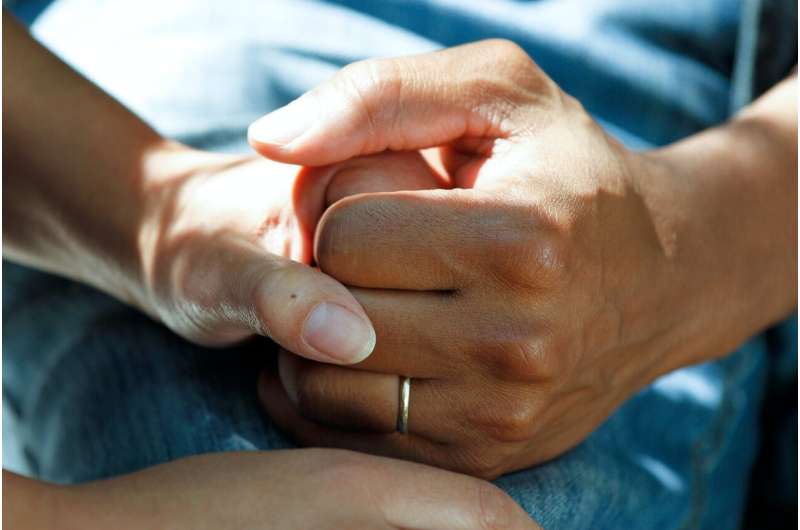Researchers develop model to estimate COVID-19 mortality risk in veterans

Healthcare professionals can estimate who is at most risk for dying from COVID-19, including seniors and those with a variety of health conditions. However, until recently, that estimate has mostly been based on judgment and experience.
That may change with new work led by Joseph King Jr., MD, MSCE, associate professor of neurosurgery at the Yale School of Medicine, and chief of neurosurgery at the VA Connecticut Healthcare System. In a paper titled "Development and validation of a 30-day mortality index based on pre-existing medical administrative data from 13,323 COVID-19 patients: The Veterans Health Administration COVID-19 (VACO) Index," published on November 11, 2020, in the journal PLOS One, researchers developed the Veterans Health Administration COVID-19 (VACO) Index. The index is a formula that uses age, gender, and pre-existing medical conditions to estimate a patient's risk of death over 30 days.
This tool provides valuable quantitative data that could identify high-risk patients to health care providers and prompt them step up monitoring or treatment or recommend that someone take extra care to prevent exposure to the virus.
"This has the potential to be a real-time decision support tool," says Dr. King.
The VACO Index could also help with vaccine triage to ensure those who could get sickest from the virus have priority access during a rollout or prioritize who should receive scarce treatments such as monoclonal antibodies.
To develop the index, Dr. King and researchers from Yale and other organizations, including the U.S. Department of Veterans Affairs, looked at 13,323 positive COVID-19 cases from the U.S. Veterans Health Administration between February and July 2020.
Dividing the data into three sections, the team analyzed data from the first cohort of 480 deaths among 3,681 patients to develop the model and used the subsequent two sections to test and validate the model. "This is a more rigorous approach than has been used for most other COVID-19 models," says Dr. King.
The researchers discovered that age is the strongest predictor of mortality, with risk climbing after age 55. Patients under the age of 50 with COVID-19 have only a 1 percent chance of dying. Those 85 and older have at least a 34 percent chance of dying if they get COVID-19.
But another important predictor of COVID-19 mortality is the number of diagnoses a patient has based on the Charlson Comorbidity Index (CCI), a listing of 17 health conditions including diabetes, liver disease, and dementia. "What we found was that the number of these conditions [that a patient had], not one special one, counted," says Dr. King. However, the study also revealed that CCI conditions myocardial infarction (heart attack) and peripheral vascular disease come with their own elevated risk for dying from COVID-19.
The index calculates, for instance, that a 77-year-old man with five pre-existing conditions from the CCI (none of which included those two special risk factors) had a 21 percent risk of dying from the virus. If that same patient had a heart attack in the past however, their risk of dying increases to 29 percent.
Dr. King says there are limits to the index: it was developed from early pandemic data before doctors had developed effective treatment protocols for treating very sick COVID-19 patients.
Also, testing rates were low early in the pandemic. Thus, the model only considers patients who were more likely to get tested—patients exhibiting more severe symptoms. "There were patients who had COVID and were never tested, and those people probably weren't as sick and didn't die," says Dr. King.
So while the index might overestimate death risk, it still tells healthcare professionals valuable information. "The relative risk is going to remain constant, even if the overall mortality rate declines" says Dr. King.
The research team is working on follow-up projects, including validating the index again with a different demographic at Yale New Haven Hospital.
The possibilities for application are profound: the researchers plan to collaborate with the Centers for Disease Control and Prevention (CDC) to refine the model and they are working with other governmental agencies that are considering using the model for vaccine and medication decision making, including the Department of Health and Human Services (HHS) project, Operation Warp Speed, the Center for Medicare and Medicaid Services (CMS), and the Food and Drug Administration (FDA). The VACO Index could be incorporated into electronic health records used in most health care systems as a decision support tool for healthcare providers when they are dealing with COVID-19 patients. Private companies such as CareJourney, Google, and MDCalc could also utilize the model. An online calculator allowing anyone to use the VACO Index is available at: www.mdcalc.com/veterans-health … x-COVID-19-mortality
"Identifying those who are at the greatest risk of dying from COVID-19—allowing us to focus resources on those at highest risk—is important to patients, health care providers, health care systems, and government organizations involved in healthcare. The VACO Index has the potential of helping all of these groups achieve better outcomes as the world struggles with the COVID-19 pandemic," says Dr. King.
More information: Joseph T. King et al. Development and validation of a 30-day mortality index based on pre-existing medical administrative data from 13,323 COVID-19 patients: The Veterans Health Administration COVID-19 (VACO) Index, PLOS ONE (2020). DOI: 10.1371/journal.pone.0241825




















